As I See It with Bruce Helander - Swimmer’s Ear
Apr 1, 2016
The headline on the editorial page of the March 27, 2016 edition of The New York Times, “Who has the Candidate’s Ear?,” got me to thinking, just for a moment, which presidential candidate might bring the most positive influence and support to the art world. JFK and Obama had first class art in the Oval Office. Nixon couldn’t comprehend contemporary art, but, ironically, initiated the National Endowment for the Arts. Hillary and Bernie show some evidence of understanding art, as opposed to the “under-educated” base, who, like their favorite candidate Donald Trump, don’t have a clue about appreciating art, unless you consider NASCAR as some form of culture. Artists Shepard Fairey, who produced a legendary Obama cover poster for TIME, and Andy Warhol, who created an anti-Nixon print in 1972, made their political opinions known through their art; these works are now worth a bundle. Future campaigns will tell artists to support those enlightened candidates who are progressive enough to champion art and make a difference.
Speaking of Andy, I seem to hear evidence of Andy Warhol’s legacy almost every day. It’s hard to believe that nearly thirty years after his untimely death, the work of this Pop Art master continues to be compelling evidence that his revolutionary approach to art making basically changed the way we look at contemporary art. And with that, we seem to be still hungry for bits and pieces about Warhol’s exciting life, both in and out of the studio he called “The Factory.” Warhol, who would have been 88 years old this coming summer, continues to be one of the few artists in history whose work remains an ongoing influence and a great investment, guaranteed at auction by a small group of elite collectors who own hundreds of his paintings and prints and have a personal stake in making sure auction records remain strong and high, thus building a de facto insurance policy that protects them all.
When Andy first jumped from his highly successful career as an illustrator to making fine art paintings, there were few buyers. Considering the controversial imagery, it’s not surprising; Warhol was mocked and misunderstood. Even though asking prices were low at his first few shows, it was a challenge to find someone with the courage to acquire his work. It's hard to believe now that his first show in Los Angeles at Irving Blum's Ferus Gallery of the Campbell soup can images in 1962 was a total flop, except for the sale of a single painting bought by Dennis Hopper. It was determined by Blum, his courageous and supportive dealer, that the time just wasn’t right, so he made Warhol an offer to purchase all thirty-two soup “varieties” for $1,000, which was sent the artist in ten monthly payments of $100 each. Mr. Blum promised never to break up the entire set of canvases, and bought back the only soup can that hadn’t been sold originally. (In 1996, it was a very different story: the complete set of soup cans was acquired by the Museum of Modern Art for $15 million.)
I remember the very first show I presented on Warhol’s early works in my Worth Avenue gallery. It was in 1983, and it was a group of “Dollar Sign” images with an asking price of $6,500 for each small silkscreened painting. I was able to sell just a couple of these works over a month's time, sending the rest back to Leo Castelli on West Broadway after failing to persuade my friends and clients to buy just one painting. Thirty years later, I noticed one of the same “Dollar Sign” images for sale recently at the Art Miami fair, listed for $850,000. Had someone listened to my advice on purchasing all the “Dollar Sign” works, they could have enjoyed a net profit of about $5 million if they were to cash in today. His 1963 canvas Silver Car Crash (Double Disaster), unsaleable at the time, sold a few years ago for $105 million, breaking the record for sales of Warhol’s work.
The Boca Raton Museum of Art, celebrating in its fifteenth year with an impressive new building, is commemorating this milestone with not one Warhol survey show, but three exhibitions that explore the depth and variety of the world of Andy Warhol. The first, Warhol on Vinyl: The Record Covers, 1949–1987+, turns a unique lens on this artist's career, from his early years as a graphic designer to the cultural phenomenon he later became. This is a remarkable show of over 100 album covers, all taking advantage of Warhol’s LP spin. The second concurrent exhibit is a collection of classic prints from the collection of Marc Bell, which presents Andy's iconic images, such as Campbell's soup cans, Dollar Signs, Flowers, and even Chairman Mao, who would be delighted to know, if he were alive, that China has overtaken Britain and America as the leading consumer of contemporary art.
The third leg of this trifecta is an amazing presentation of candid photographs by Bob Colacello, titled In and Out with Andy. Colacello was in the right place at the right time, when as a degree candidate in film criticism from Columbia University he wrote a review for the Village Voice on Warhol’s early film “Trash,” which Bob hailed as a “great Roman Catholic masterpiece.” As luck would have it, Andy read the review and invited Colacello to contribute to Interview, and just a few months later he became the editor for the next decade. The magazine flourished under Colacello’s direction, and also became an important instrument in the continuing success of Warhol’s career. This exhibition consists of images Bob took with his small black Minolta camera, given to him by the art dealer Thomas Ammann, which could be hidden in his jacket pocket. Bob was with Andy constantly as one-half of their dynamic duo, and that meant going out every night to an endless array of cocktail parties, dinner parties, art openings, film premieres and after hours clubs. This is the first museum show of these intimate portraits of Andy and friends, which includes snapshots of Mick Jagger, Liza Minnelli and Truman Capote, among dozens of others on display. I had the distinct pleasure of interviewing Colacello during the exhibition, which continues through May 1, and it gave me personal insights that I never had before and reinforced my long standing conviction that Andy Warhol was one of the most inventive artists of all time.
Another creative dynamic duo currently setting Fifth Avenue on its ear is Elmgreen & Dragset, with their large-scale sculpture placed outside of Rockefeller Center. The reaction to their latest installation will be similar to first viewing an original Warhol, meaning, it is the most talked about object in town due to its wit, novel juxtaposition and inventiveness. These two artists have pooled their creative resources and dove right into yet another astounding installation by transforming a familiar object, like Andy and his soup cans or Brillo boxes, in this case a large swimming pool on its side, placing it into a grand public space and converting the ordinary into a surreal object taken out of context. The title of the work is Van Gogh’s Ear. An oblique reference to the tortured artist’s self-inflicted razor slice after an argument with his friend, Gauguin, while painting in Arles, France. Certainly from a distance it takes on the curvaceous shape of an large, dismembered, surrealistic albeit powder blue, abstract ear shape. In this case, it looks uprooted from an altogether incongruous setting, where a new context gives the work, like all of these two men's efforts, an often hilarious but oddly handsome and unforgettable platform that is unique in contemporary art. Perhaps it’s no coincidence that the pool shape has a distant connection to Duchamp’s most famous “ready-made” sculpture, titled Fountain and signed by 'R. Mutt,' of a found urinal designed to hold water but was as useless as an empty pool, complete with drain. Like one of Elmgreen & Dragset's most memorable works, Prada Marfa (2005), where they built a full-scale, one-story facsimile of the famous luxury store out on a lonely highway in the West Texas desert, these guys are virtual masters of unforgettable irony. Like Bob Colacello’s documentary images that became iconic and have lasted long after many of his subjects have passed on, the vision of Elmgreen & Dragset's three-story lima bean-shape in Midtown Manhattan with a limited performance (through June 3) will live on in perpetuity with photographs. The installation is organized by Public Art Fund and Tishman Speyer.
For more information: Boca Raton Museum of Art; Public Art Fund, Elmgreen & Dragset project.
Author

Bruce Helander
Bruce Helander is a former White House Fellow of the National Endowment for the Arts and is the former Editor-in-Chief of The Art Economist magazine. His columns on art, values, and investing in art appear regularly in The Huffington Post.

:sharpen(level=0):output(format=jpeg)/wp-content/uploads/2016/05/as-i-see-it-with-bruce-helander-swimmers-ear2.jpg)
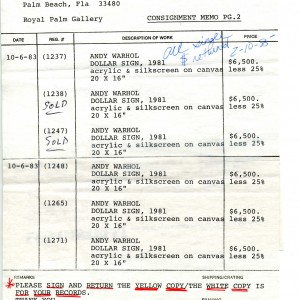
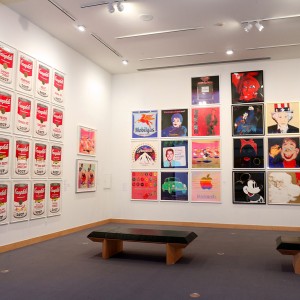
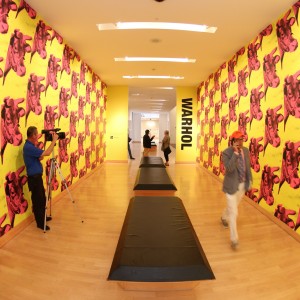
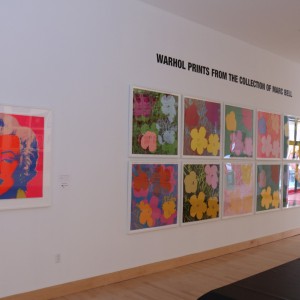
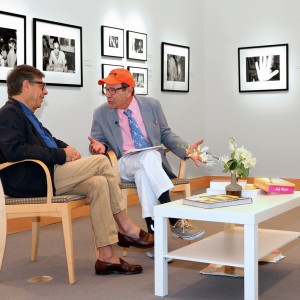
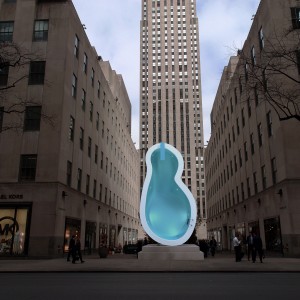
:sharpen(level=1):output(format=jpeg)/wp-content/uploads/2025/11/kian-lem-s_HqmrMsph8-unsplash-scaled-e1764007192632.jpg)
:sharpen(level=1):output(format=jpeg)/wp-content/uploads/2021/11/5-Things-You-Should-Do-When-Buying-Art.jpg)
:sharpen(level=1):output(format=webp)/wp-content/uploads/2025/11/sebastien-Laboureau-with-art-at-sagamore.jpg.webp)
:sharpen(level=1):output(format=jpeg)/wp-content/uploads/2025/11/Banner-Image.jpg)
:sharpen(level=1):output(format=jpeg)/wp-content/uploads/2025/11/Olga-de-Amaral.jpg)
:sharpen(level=1):output(format=jpeg)/wp-content/uploads/2025/11/F7642843-7A6C-4F72-964E-78BF1B6D4706_1_201_a-scaled.jpg)